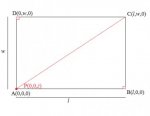Could someone explain to me how the author of the book I'm reading managed to perform this simplification?
\(\displaystyle \cos^{-1}\, \left(\, \dfrac{z\, \cdot\, \sqrt{\strut x^2\, +\, y^2\, +\, z^2\,}}{\sqrt{\strut (x^2\,+\, z^2)\, \cdot\, (y^2\,+\, z^2)}}\, \right)\, =\, \sin^{-1}\, \left(\, \dfrac{x\, \cdot\, y}{\sqrt{\strut (x^2\, +\, z^2)\, \cdot\, (y^2\, +\, z^2)}}\, \right)\)
It is the last step in a large series of simplifications that I all managed to understand, but here he lost me. Unfortunately I need to understand it completely, because I need to perform it myself in a slightly different context.
Thanks in advance!
\(\displaystyle \cos^{-1}\, \left(\, \dfrac{z\, \cdot\, \sqrt{\strut x^2\, +\, y^2\, +\, z^2\,}}{\sqrt{\strut (x^2\,+\, z^2)\, \cdot\, (y^2\,+\, z^2)}}\, \right)\, =\, \sin^{-1}\, \left(\, \dfrac{x\, \cdot\, y}{\sqrt{\strut (x^2\, +\, z^2)\, \cdot\, (y^2\, +\, z^2)}}\, \right)\)
It is the last step in a large series of simplifications that I all managed to understand, but here he lost me. Unfortunately I need to understand it completely, because I need to perform it myself in a slightly different context.
Thanks in advance!
Attachments
Last edited by a moderator:


